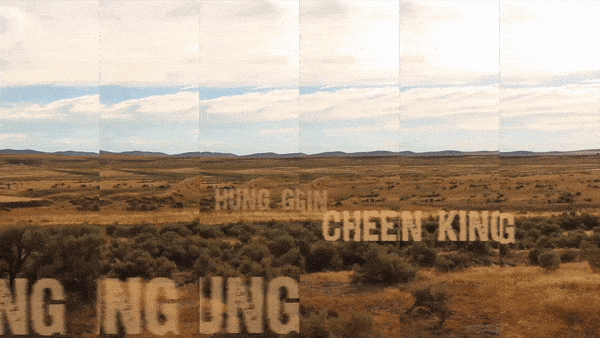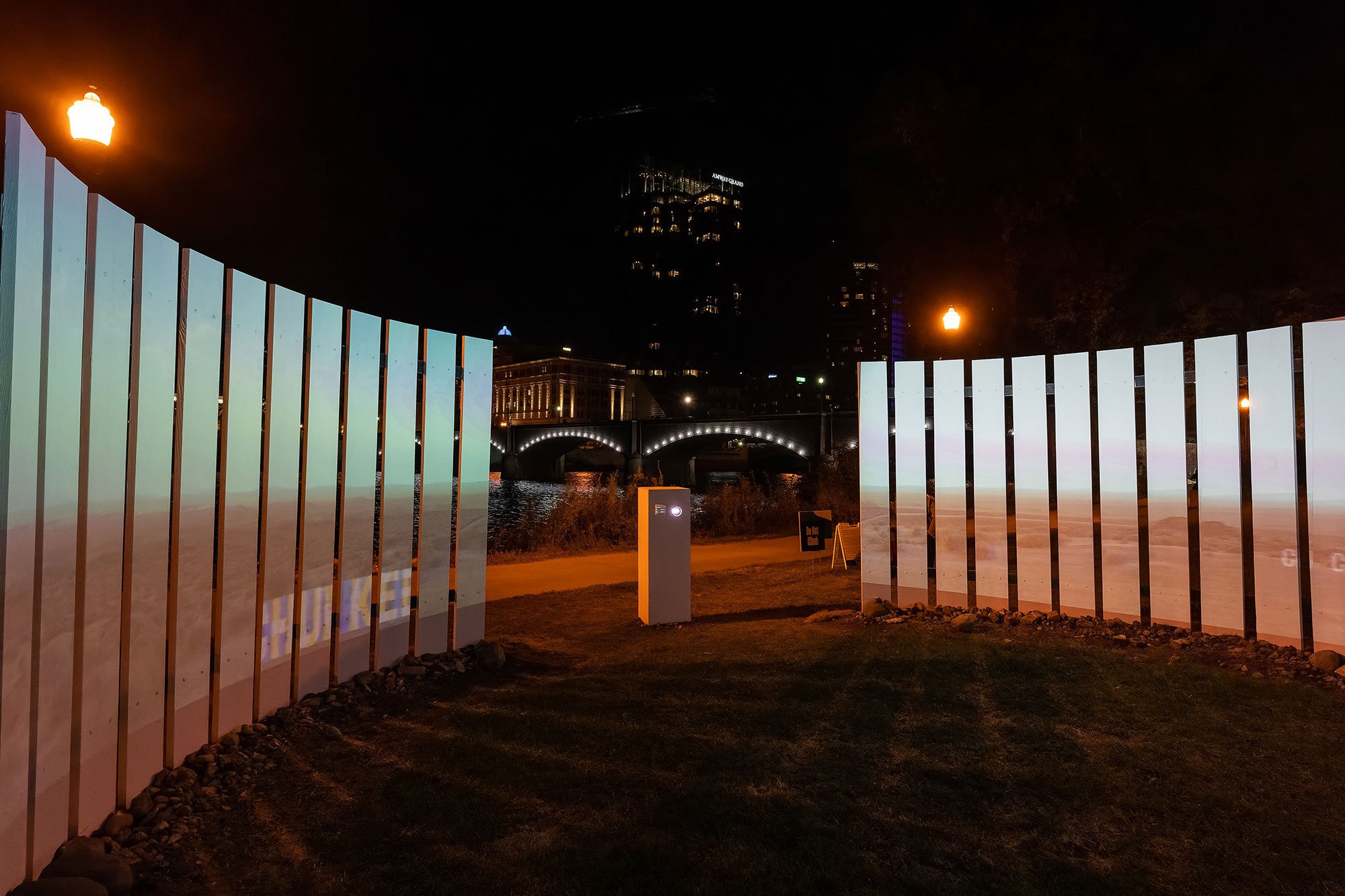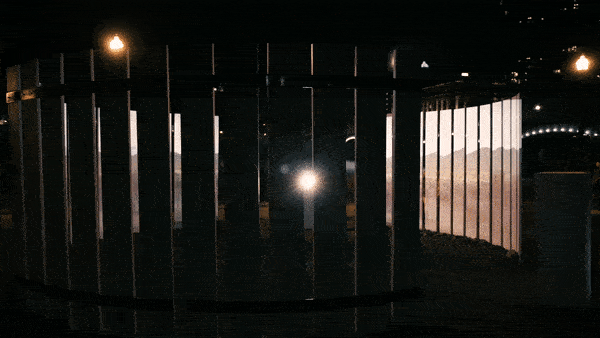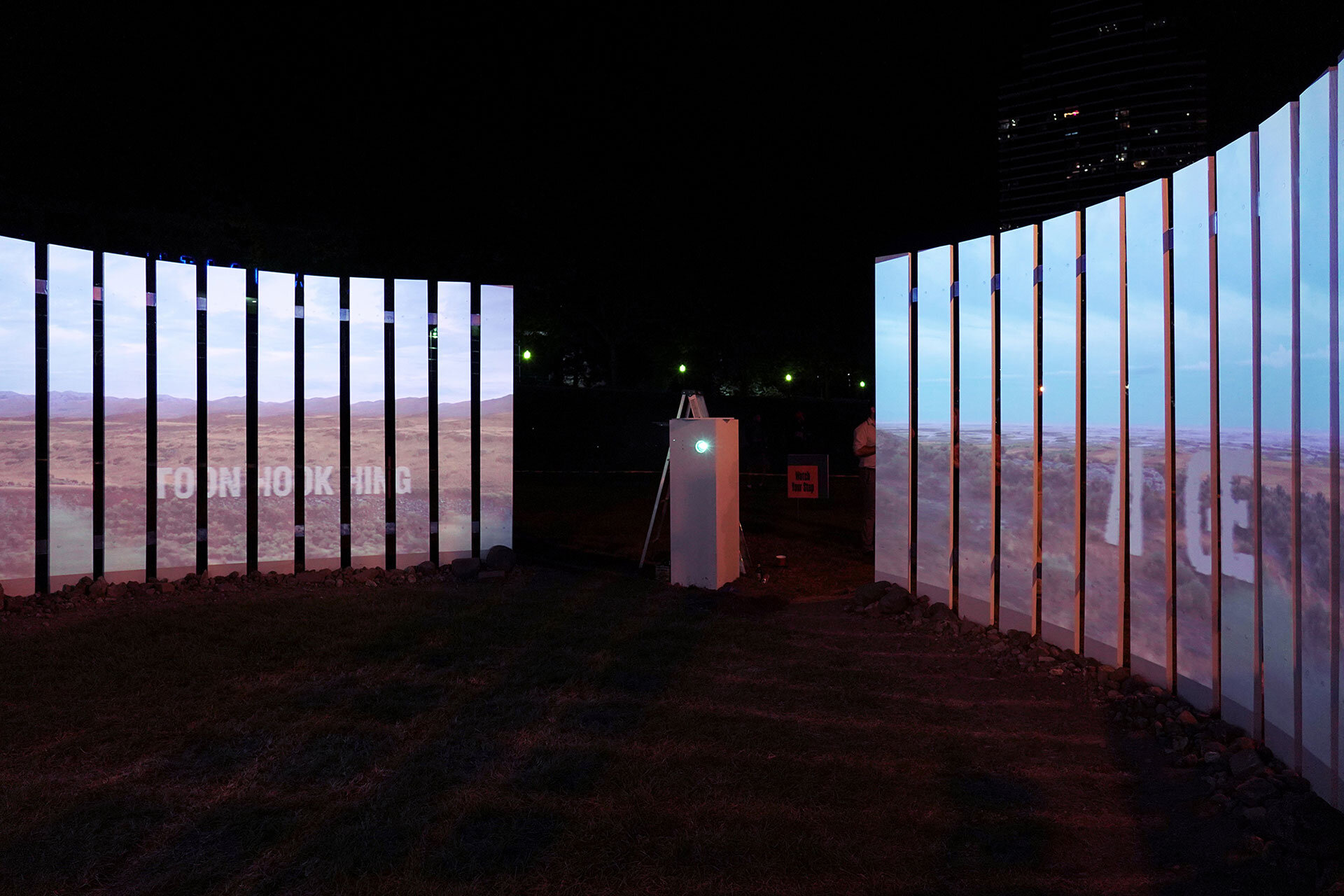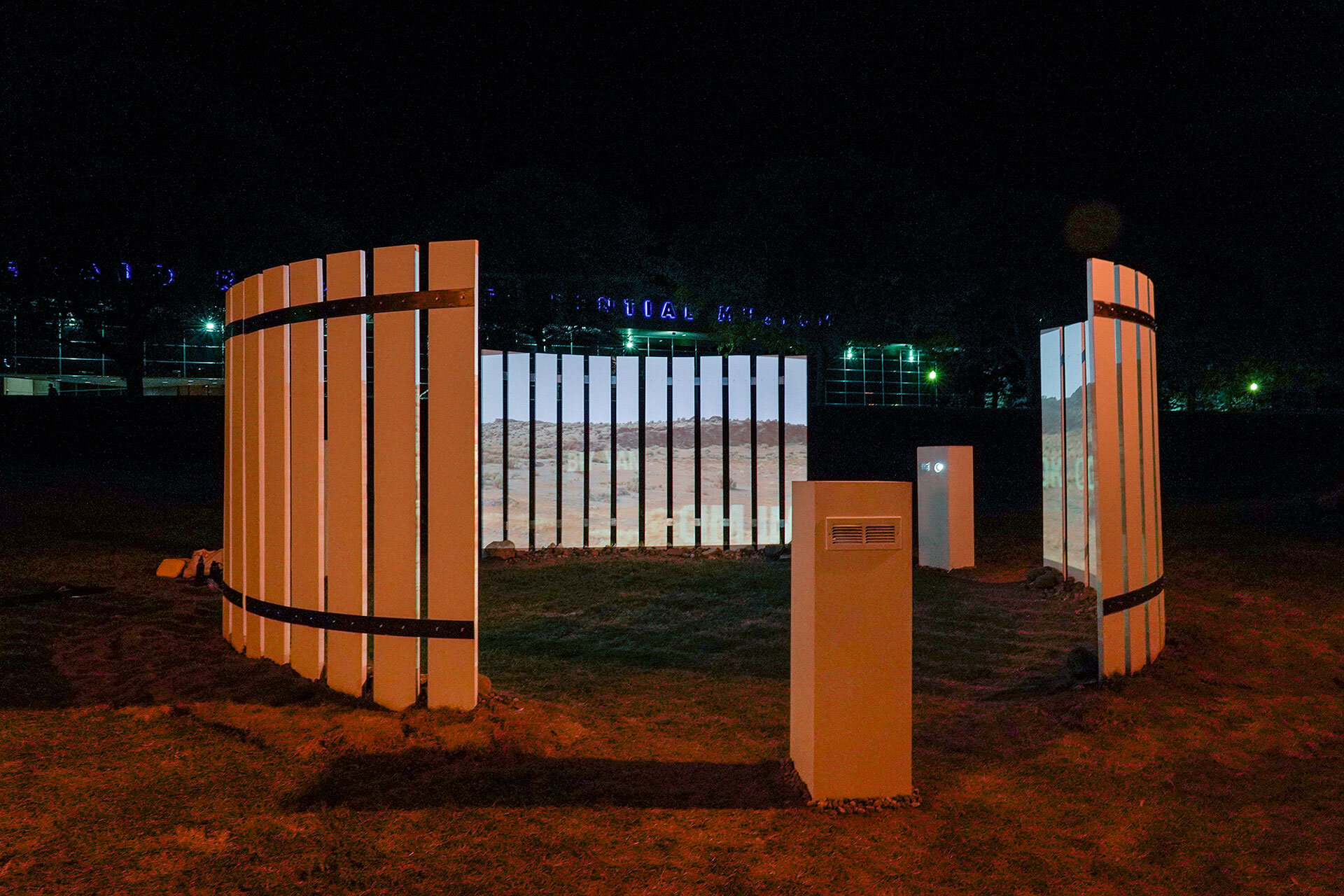Project Unity: Ten Miles of Track in One Day (2021) — Three channel video projection onto 36 tall wood pillars, installed at Ah-Nab-Awen Park, Grand Rapids (MI), 25 ft x 25 ft x 8 ft
Artists: Yuge Zhou (Concept and Video) + Hwa-Jeen Na (Sculpture concept and Fabrication)
From 1863 – 1869, Central Pacific Railroad Company employed thousands of emigrant Chinese as manual laborers to construct the western half of the Pacific railway, the first transcontinental railroad that bridged east and west coasts of the United States, dramatically reducing travel times and unifying the country. Collectively these “railroad Chinese” laid 690 miles of tracks toiling through harsh conditions with low pay. Historical records rarely identified these twenty thousand workers. Railroad payrolls have a scant list of their names, often anglicized. The video, which spirals around viewers as a three-channel projection onto 36 pillars, memorializes these silent workers who are the ancestors of many of today’s Chinese Americans. The phenakistoscope patterns interlock over a hundred names that scholars have been able to recover with the landscape from Sacramento, California to Promontory, Utah where the workers labored.
The sculpture uses the motif of a deconstructed circle to convey the struggle for connection and understanding in divisive times. The small and large gaps between pillars connote a sense of distance and displacement. In contrast, black steel bands line the exterior circumference of the sculpture to physically and metaphorically hold the sculpture together and prevent the circle from falling apart. The effect is also one of a never-ending rail line. Together, the video and sculpture situate the viewer in a space that is both unified and fractured, historically significant but forgotten, connecting the United States to the world beyond.
Primary source of the names of Chinese workers: Chinese Railroad Workers in North American Project, Stanford University.
Research assistant: Patrick Steppan
Fabrication consultant: Ross Keong, Veronika Schmid
The work is the Juried Award winner in the installation category at ArtPrize 2021. Words from juror Shannon Stratton, executive director of the Ox-Bow School of Art:
“What was really powerful about this work was the research component of uncovering a lot of the names of those [Chinese] laborers that had been lost to history.... one of the things that I found so effective is the way the names are floating in the landscape, reminding me of the Hollywood sign.
The names have a way of speaking to a kind of fame that the Hollywood sign represents as an American symbol of fame and glory. So these names are given the kind of gravitas that can be understood within an American vernacular idea of popular culture. [The work] is incredibly smart and well-researched and powerful and emotional, but also very well-conceived in terms of the marriage of those ideas with the materials and technology.”
Press:
The Daring: Yuge Zhou’s New Video Installation Is a Provocative Ride Through Chinese American History
5760 x 1080 pixel; Ten-minute video, infinite loop; 2021

